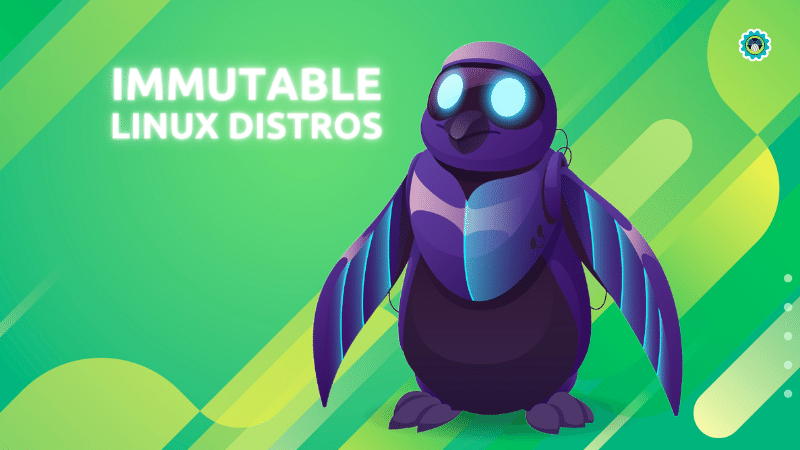If you're a Linux enthusiast, you've likely come across terms like "immutable distribution", "OS3", or "image-based operating system". These concepts have been gaining traction in the Linux community, sparking curiosity about their significance. In this article, we'll delve into the world of immutable distributions, exploring how they work, their advantages, potential drawbacks, and whether they truly represent the future of the Linux desktop.
Immutable Distributions: What Are They?
An immutable Linux distribution is a unique breed of operating system designed to be read-only and resistant to easy modification once installed. The fundamental idea behind these distributions is to restrict user and superuser access to system files and directories, ensuring that most changes are temporary and erased upon reboot. This approach has earned them the moniker "immutable."
When updates are applied to the system, they don't modify the existing installation. Instead, they create a new system image that becomes the active one upon the next reboot. While this might initially seem limiting, immutable distributions implement workarounds to ensure users can still customize their computing environment.
Advantages of Immutable Distributions
1. Enhanced Security
Immutable distributions offer robust security benefits. Since users and third-party programs can't readily modify the core system, the risk of viruses, Trojans, ransomware, and other malware compromising system files and directories is significantly reduced. Even if an attacker gains access to the system, their ability to write or modify system components is limited.
2. Reliability
Immutable distributions are highly reliable. Users are less likely to accidentally break their systems or encounter issues caused by third-party software modifications. Unlike conventional distributions, there's no risk of running into dependency conflicts or unintentionally destructive commands.
3. Maintenance Simplicity
Maintenance is streamlined with immutable distributions. Updates are only applied after a reboot, eliminating the risk of breaking the system while it's running. This approach also minimizes the chances of encountering dependency-related problems during updates.
How Are Applications Installed?
One significant challenge with immutable distributions is installing applications, as traditional package management systems typically require write access to the system. Immutable distributions address this issue using various methods:
1. Universal Packaging Formats
Many immutable distributions embrace universal packaging formats like Flatpaks, Snaps, and AppImages. These formats don't need full system access and bring their dependencies, making them ideal for installation on immutable systems.
2. Layering
Some distributions allow users to install packages in a dedicated layer separate from the immutable base system. These layered packages persist across reboots and are included in the updated system image, providing a way to install drivers, libraries, and applications not available as universal packages.
3. Containers
Containers, such as those used with Distrobox, enable users to launch applications in a separate environment with full write access. This approach is useful for applications that must interact with the system at a deeper level.
Updating in Immutable Distributions
Immutable distributions handle updates differently from traditional ones. Updates are never applied in place; instead, they create a new bootable system image. This approach ensures that users always have access to the previous version if issues arise after an update. While this requires reboots, it enhances system stability and security.
Complexity and Drawbacks
Immutable distributions introduce complexity, especially for users accustomed to traditional Linux distributions or other operating systems like Windows or macOS. Basic tasks like installing packages, updating, and manually editing config files differ significantly.
Learning Curve
Immutable distributions require users to adapt to new ways of performing familiar tasks. Installing packages, updating the system, and even manually editing configuration files may involve unfamiliar processes. This learning curve can be steep for those new to this approach.
Limited Flexibility
Immutable distributions may not suit users who value the ability to access and modify any file at any time. The restrictions imposed by these distributions can be seen as limiting, especially when compared to traditional Linux distributions.
Are Immutable Distributions the Future of Linux?
Immutable distributions offer unique benefits, making them a valuable option, particularly for server environments and specialized appliances. However, their limitations and complexity may hinder their adoption among regular desktop users. While they won't replace traditional Linux distributions, they will likely coexist, catering to different use cases and preferences.
In conclusion, immutable distributions represent a promising evolution of Linux operating systems, emphasizing security, reliability, and ease of maintenance. Whether they become the standard or remain a niche choice depends on individual needs and priorities. Immutable distributions offer an alternative approach to Linux, one that can be better suited to specific scenarios but may not be the right fit for everyone.


No comments yet